神(しん)初番目物
神を主役とする能を「初番目物」と言います。「翁」の脇に置かれる能という意味で「脇能」とも呼ばれます。
代表演目
「高砂」「老松」「養老」
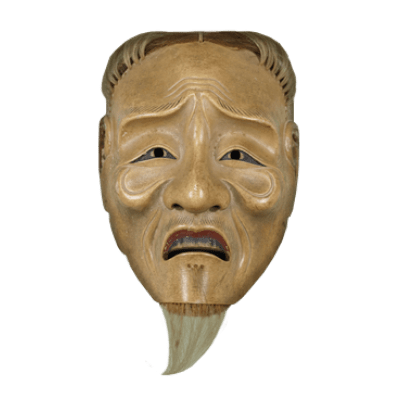
Watching NOH
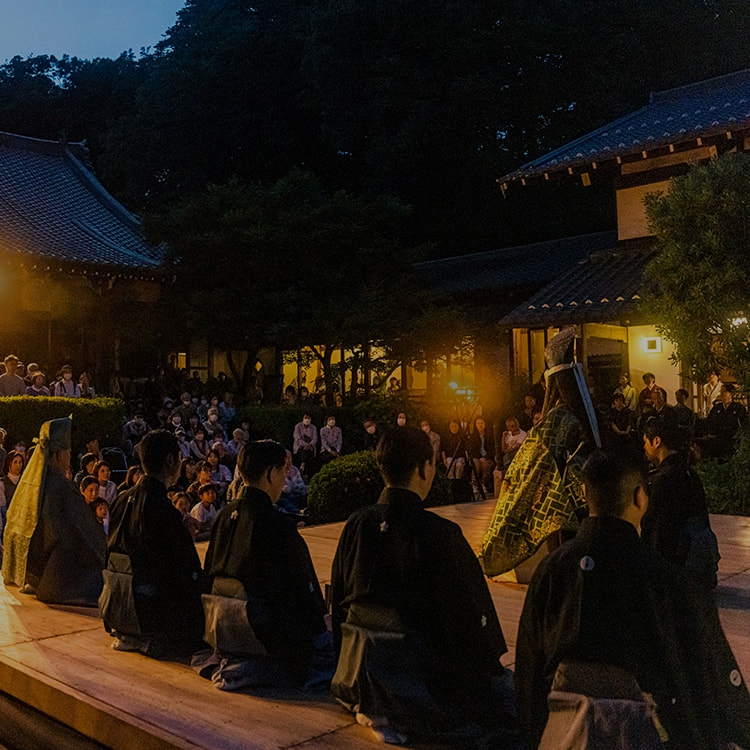
能は、平らかな世界で
心身を和らげる。
Noh soothes the mind and body in a world
where everyone is equal
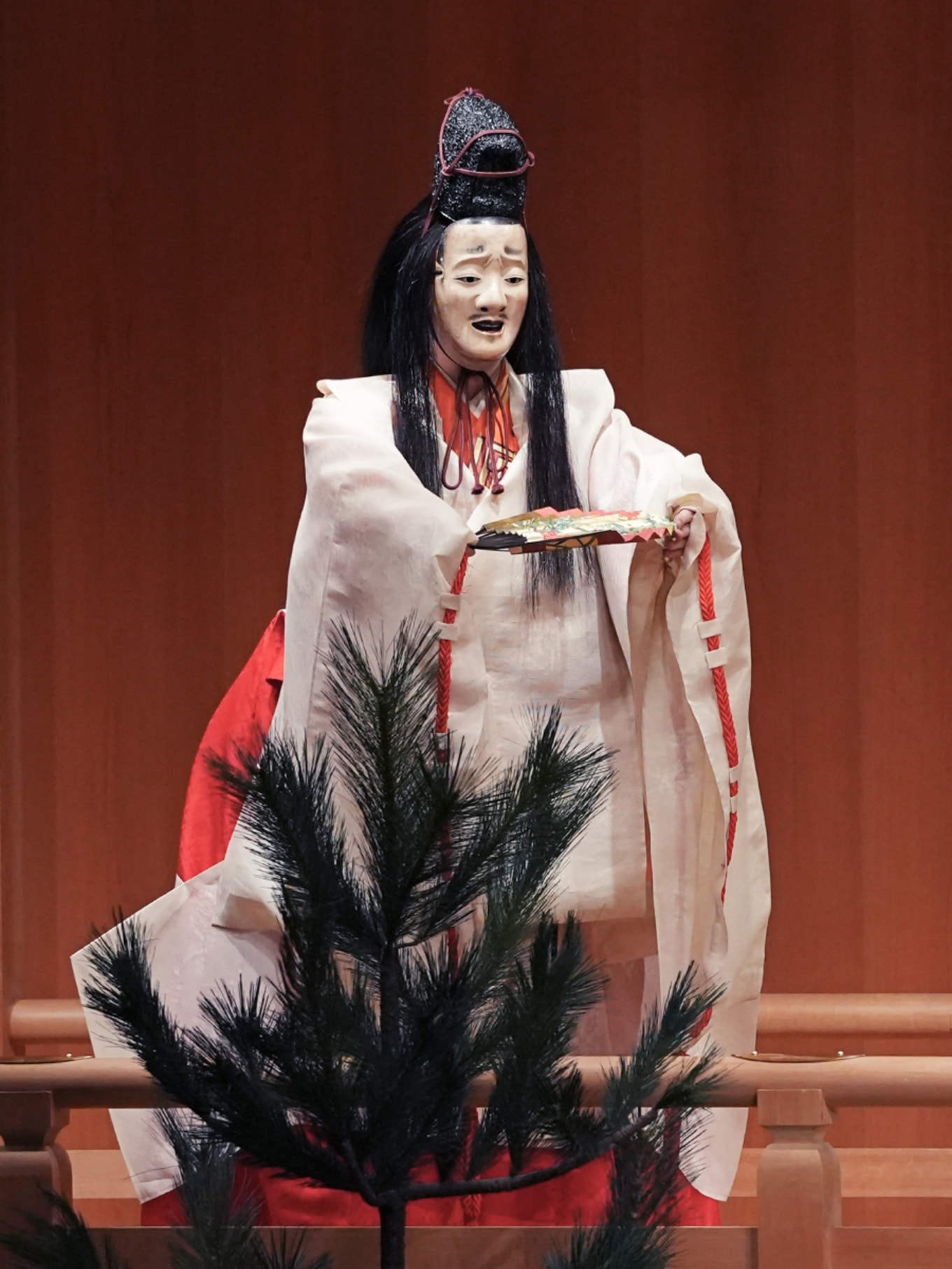
能を観るということ。能の鑑賞において、身分の上下や能への造詣の浅薄、格式やマナーなど何も問いません。それは、能は誰にも拓かれた演劇で、ただ「人」を想い、人の奥深くの「こころ」を表現する演技だから。人である根源を象徴する演劇が、観る人の心と身体に和らぎと健康をもたらすのです。一度も途絶えることなく受け継がれてきたという意味では、世界で最古の歌舞劇。観る人それぞれにさまざまな感情をもたらします。
Watching Noh.When it comes to appreciating Noh, social status, depth of knowledge, formality, or manners do not matter. Noh is a form of theater open to everyone; it simply contemplates ‘humanity’ and expresses the profound depths of the human heart. This art, which symbolizes the essence of being human, brings tranquility and well-being to the hearts and bodies of its audience. As a continuous tradition that has never been interrupted, Noh is the oldest performing art of song and dance in the world. It brings a unique range of emotions to each viewer.
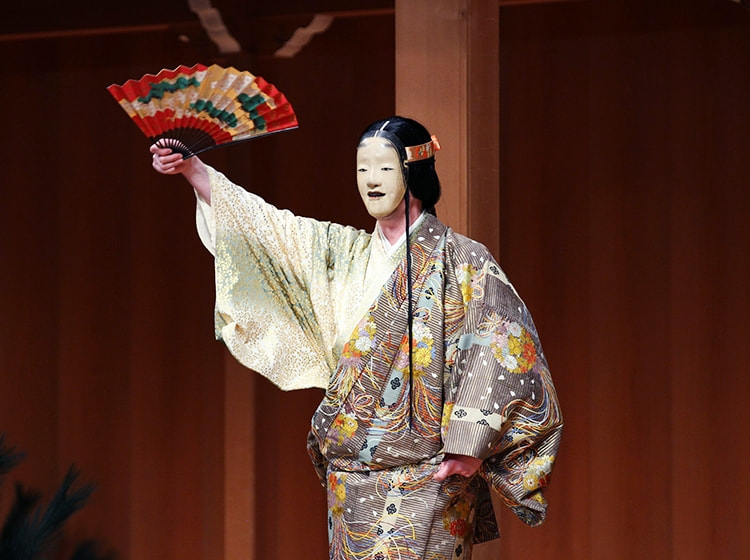
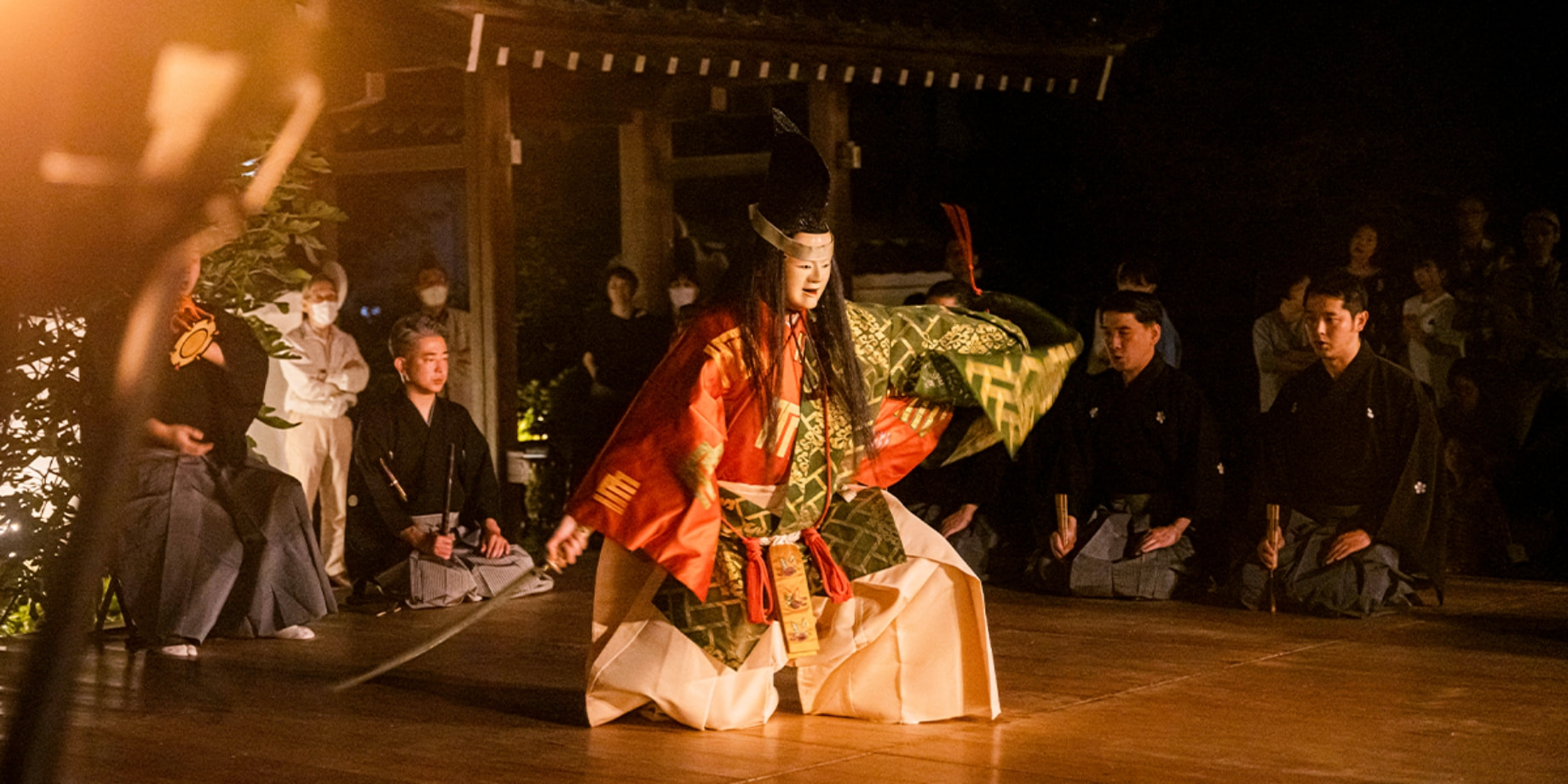
日本の中世紀に産声をあげ、600年以上の時を越え、国境を越えてきた日本の最古の演劇である能。なぜ、長きに渡り人々に愛され大切にされてきたのか。それは、能の始まりは庶民の間で親しまれてきた歌舞音曲や、神様への奉納の舞が起源であったから。今も昔も変わらぬ人の想いが原点であり、時の権力者の胸をうち、保護されながらも変わらぬ願いを舞い謡ってきたからこそ、現代の人の心も魅了し、今に行き着きます。能は、実はとてもシンプル。能舞台は大掛かりな舞台セットがなく、拓かれた空間で演者と客席とも近いのも特徴。この限りなく「無」に近い空間の中で、さまざまなドラマが生まれ、また「無」に戻るのです。さながら一つの哲学であり、小さな宇宙のよう。
能の鑑賞に特別なお作法も、お勉強も必要ありません。鑑賞中に笑う人もいれば、涙する人もいて、時には眠たくて眠ってしまうこともあるでしょう。でもそれでいいのです。それが、今のあなたの「心模様」なのだから。誰にでも開かれてる能の世界に、ぜひお越しください。
Noh, Japan’s oldest theatrical art, was born in the medieval period and has transcended over 600 years and crossed borders. Why has it been cherished and loved by so many for so long? The origins of Noh lie in the popular songs, dances, and offerings to the gods that were cherished by the common people. The unchanging human emotions at its core have resonated with the hearts of powerful figures throughout history, leading them to protect and preserve it, allowing Noh to continue enchanting audiences to this day. Noh is, in fact, very simple. The Noh stage is characterized by its lack of elaborate sets and the closeness between the performers and the audience in an open space. In this space, which is as close to “nothingness” as possible, various dramas unfold and then return to “nothingness.” It’s akin to a philosophy, a small universe of its own.
No special etiquette or prior study is required to appreciate Noh. Some people may laugh, some may cry, and sometimes, you may even feel sleepy and drift off. But that’s perfectly fine. That is simply your current state of mind. We invite you to step into the world of Noh, a world open to everyone.
能は、演者の役柄によって「神(しん) 、男(なん) 、女(にょ)、狂(きょう) 、鬼(き)」の5つのジャンルに分かれます。そして、この5種類を順番どおりに演能することを「 五番立(ごばんだて) 」といい、江戸時代からの伝統的なプログラム。ですが、現代では長時間の上演になるため、「五番立」を基本に順番を考慮して演目が組まれています。
Noh is divided into five genres based on the roles of the performers: Shin (Gods), Nan (Men), Nyo (Women), Kyō (Madness), and Ki (Demons). Performing these five types in sequence is known as Goban-date, a traditional program that dates back to the Edo period. However, in modern times, since performing all five in one sitting would take a long time, performances are typically organized based on the Goban-date structure but with consideration given to the order of the plays.
※ 「神(しん)、狂(きょう)」出典:ColBase(https://colbase.nich.go.jp/)を加工して作成
神を主役とする能を「初番目物」と言います。「翁」の脇に置かれる能という意味で「脇能」とも呼ばれます。
代表演目
「高砂」「老松」「養老」

男性が主人公となるもので、主役は武将の亡霊など死者が多く、「修羅物」と呼ばれます。
代表演目
「敦盛」「清経」「屋島(八島)」「巴」
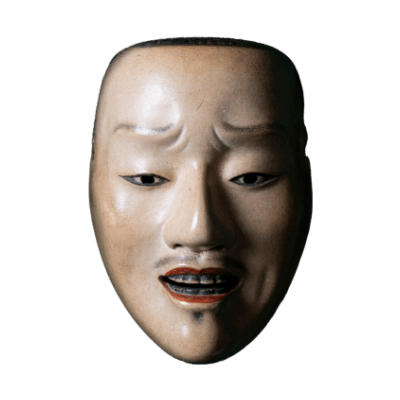
女性が主人公の能で「鬘物(かずらもの)」と言われます。番組の中心をなしており、テーマは、恋愛とその苦悩が中心。
代表演目
「羽衣」「井筒」「松風」「定家」
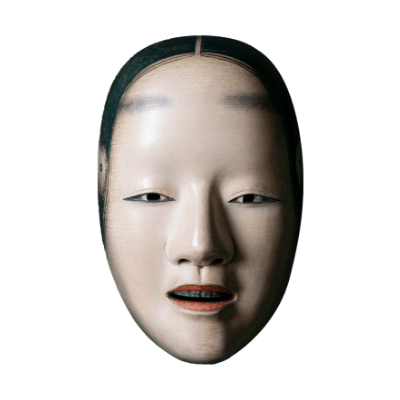
心乱れたさまの物狂いを主役とする能で、「狂女物」「狂い物」とも呼ばれます。
代表演目
「隅田川」「百万」「鉄輪」「道成寺」
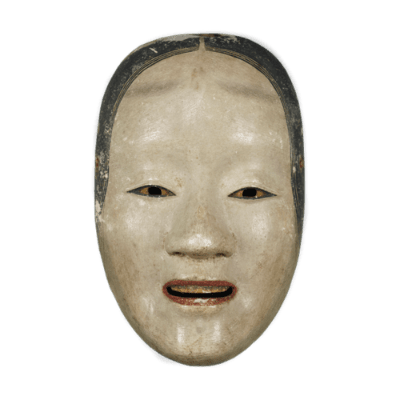
鬼、天狗、妖精、龍神などが主役となる能です。五番立の最後なので「切能物(きりのうもの)」とも呼ばれます。
代表演目
「鵺」「殺生石」「安達原(黒塚)」「猩々」
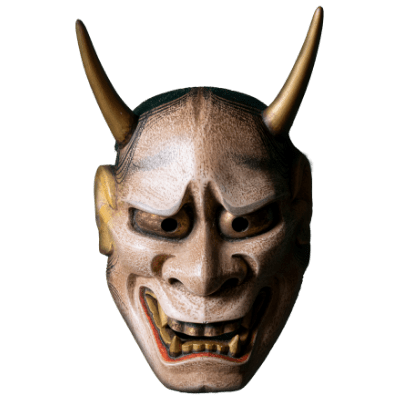
正式な五番立ての前には「翁(おきな)」が演じられます。「翁」は、翁猿楽の流れをくむとされ、「能にして能にあらず」といわれ一般の能とは区別され、常に演能の頭に上演されます。神聖な儀式として大切に扱われており、今でも正月や記念の会、祝賀の会などでは、初番目物の前に、「翁」が上演されます。
Additionally, before a formal Goban-date performance, the play Okina is often performed. Okina is said to have roots in Okina Sarugaku and is considered “Noh but not Noh,” distinguishing it from other Noh plays. It is always performed at the beginning of a program. Treated as a sacred ritual, Okina is still performed today at New Year’s, commemorative events, and celebratory gatherings, preceding the first play of the main program.
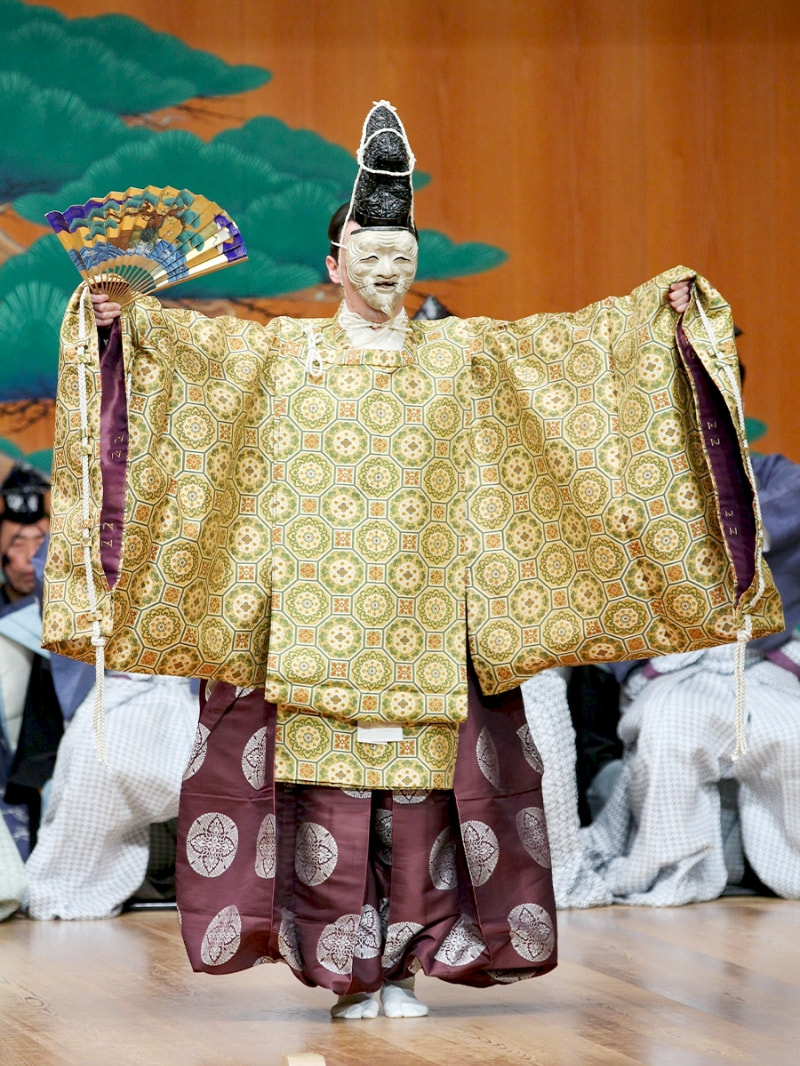
敷居の高さを感じる能ですが、服装などにルールはありません。とはいえ、初めて能を鑑賞する際は少しの不安もあることでしょう。初めての方が感じる不安や疑問をご紹介。少しでも不安が和らいだら嬉しいです。
Noh may seem intimidating at first, but there are no strict rules about attire. Even so, it’s natural to feel a bit uncertain when watching Noh for the first time. Here, we address some common concerns and questions that beginners might have. We hope this helps ease your worries, even just a little.
Q初めて観るのですが大丈夫でしょうか?
解説付きの公演もたくさんございます。ですから、お気軽にお越しください。少しでもご興味のあられる方は、あらすじをお調べいただいたり、事前解説がある公演をご覧になると判りやすく楽しくご覧いただけるかもしれません。
Q演目のあらすじがわからないまま観るのは不安……
もし観にいく演目が決まっておりましたら、事前にストーリーやみどころを知っておくと、より舞台を楽しめるかもしれません。ですが事前知識がなくとも、会場で配られる解説に目を通していただいたり、舞台やその場の雰囲気や迫力を楽しんでいただくだけでも良いのです。
Q海外の方を連れて行きたいのですが。
もちろん大歓迎です。英語の簡単な解説はご用意させていただきます。
Q劇場でのマナーはありますか?
劇場での服装に、決まりはございません。周りのお客様もいらっしゃいますので、上演時間の前にはご着席いただき、途中での入退場は控えていただけますと、より能の世界に没頭できるかと思います。
Q子供は何歳から入れますか?
公演会場や演目により、年齢設定がある場合もございます。ですが中には、赤ちゃんや未就学児のための公演や、お子様をご招待する公演もございます。お気軽にお問い合わせください。
Q拍手のタイミングっていつですか?
お好きなときに、ぜひ拍手をお願いいたします。
感じる感情は人それぞれです。ご自分のタイミングで自由に観劇ください。能は終演後の雰囲気が独特ですので、お客様が戸惑われることが多いのですが、能楽師が退場する際などは拍手も多いかと思います。